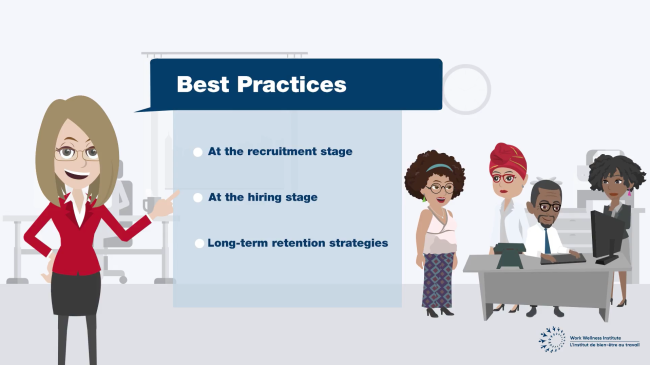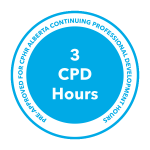Welcome to the Inclusive Retention Course presented by Work Wellness Institute. This course is for employers, managers, supervisors and anyone interested in helping to create an inclusive workplace. Creating an inclusive workplace is the responsibility of everyone; however, those in decision making roles tend to have the responsibility of overseeing and general execution of policy, procedure, process, and practice. In this course you’ll learn practical strategies for implementing best practices, creating flexible approaches to work, assessing the built environment for accessibility and developing long-term plans for employees to help them see and build a future with your organization.
What You’ll Learn:
In this course, we’ll take a deeper dive into some of the best practices employers can use to retain talent. There are some tried and true methods of ensuring people are engaged at work, but there are new factors on the horizon that employers can leverage to help build trust and capacity in their organizations.
When it comes to retaining employees, one of the current desires of an employee is a flexible approach to work. With the recent events of the pandemic, we know that the priorities for working adults have changed and employers need to accept, adopt and implement changes that support workers and recognize they have personal and professional needs. We’ll cover some easy-to-implement strategies and practices that can help create a flexible approach to work and we’ll ensure that those approaches are inclusive.
Next we’ll discuss the built environment and the very real impact that the physical work environment has on employees. A simple example of just how important the built environment is can be illustrated when you imagine yourself trying to work at a messy desk. It’s almost impossible to concentrate when there are bills, memos, reminders, to-do lists, last night’s dinner, and a ringing phone piled high on your desk. A clean, safe, accessible, and effective workplace can make a big difference for an employee’s comfort, health and well-being, not to mention productivity.
In the final module of this course, you’ll learn to develop and use long-term career planning tools that help consider the needs, wants, desires, hopes and goals of an employee. When we’re talking about retention, we’re not just talking about recruitment policies and onboarding strategies. A long-term commitment to an employee requires a long-term approach. And employers expecting employees to commit to their organizations for long periods of time should be prepared to demonstrate their willingness to do the same.
Module Learning Outcomes:
Module 1
- Begin implementing some of the best practices for inclusive retention in your organization
- Develop a deeper understanding and use of flexible approaches to work
Module 2
- About the built environment and how you and your team can make changes over time to improve the working experience on-site.
- How to help remote workers create functional working spaces at home.
Module 3
- Employee review systems
- Long-term career strategy planning.
- Gathering Feedback
Course Structure (inclusive of time commitment):
Information in this course is presented through animated videos, text and a variety of activities. The videos will explain key concepts and the text and activities provide opportunities to reflect on your learning and encourage action steps to implement your learning in your organization.
This course is intended to take approximately 1.5 – 3 hours to complete. It is separated into modules and your progress is automatically saved, so feel free to complete at your own pace.

